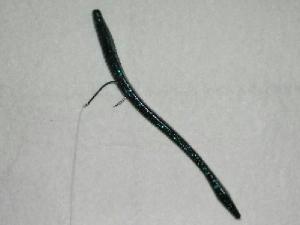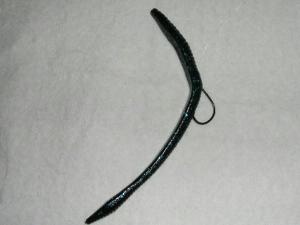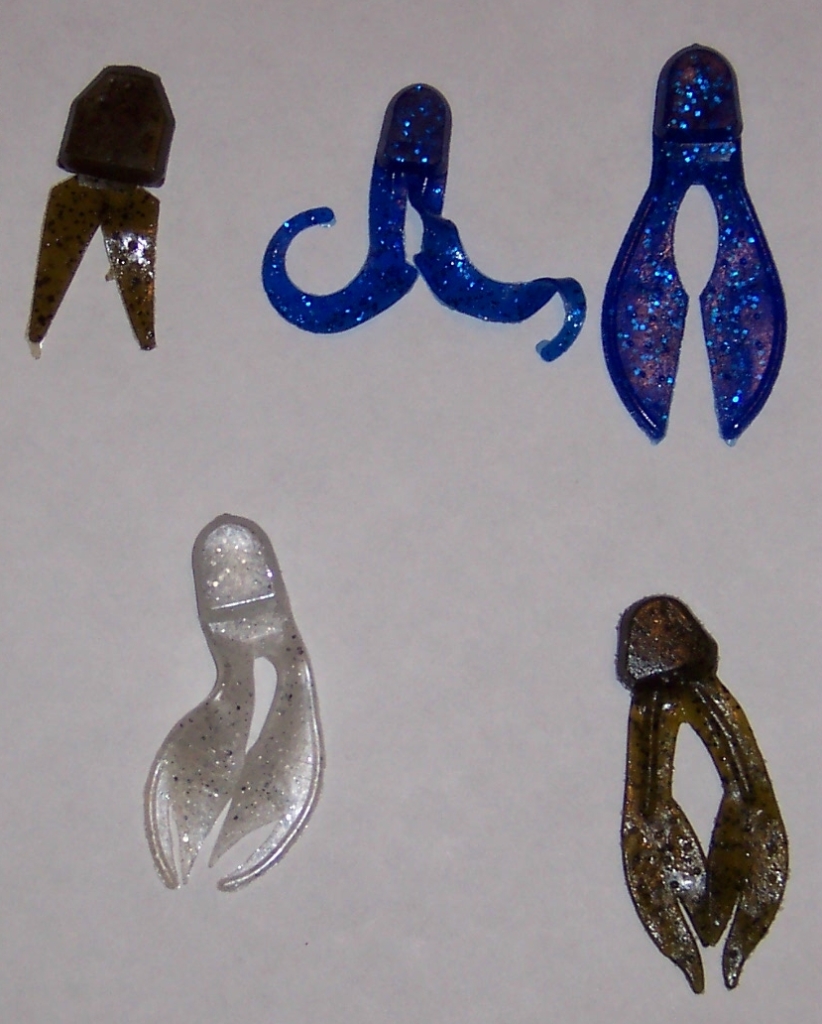Article by Jeff Banko
I was lucky enough to have a father that was a pretty serious fishermen who showed me the ropes when it came to tackle and equipment needs as I was starting out at a very young age. Many of you are not lucky like I was. All too often I see people that would really love to get into fishing especially for bass but become very frustrated and give it up because they are improperly outfitted. Because of this I decided to try and share some of the knowledge I have gained in my 28 or so years of fishing and write something on the needs of a fishermen trying to get into bass fishing.
Rods and Reels
The first thing a person who wants to get into bass fishing will need to do is get themselves some rods and reels. As a beginner my advice is to keep this as simple as you can. I know you will see many seasoned vets, myself included, out there with a whole boat load of rod and reel combos but since you are just starting you don’t need to go that far. I would suggest you do the following:
1) Decide how much you are willing to spend but don’t go overboard. You can buy quality reels for around $30 dollars and quality rods for around $30 – $40. These reels will be good enough for you at this point, by no means garbage, and will easily serve you as you are learning to love the sport. It won’t make sense for you to spend the big dollars on rod and reels right now because frankly I don’t think you would be able to notice the difference and appreciate them with a beginners skill level. Be patient buy the good stuff when you are good enough to really judge what you want.
2) Get yourself one Spinning reel. Look for a reel that will hold an ample amount of 8-10 pound test line. Usually these will be in the 30 or 3000 series of a reel for example I use Quantum, Catalyst 30PTi reels that will hold 160 yards of 8 pound test. Have the reel spooled with 8 or 10 pound monofilament line. Do not skimp on the line. This is the one area where as a beginner you need to spend money. Cheap line will make your life a nightmare with tangles and broken knots, etc…
3) Match the spinning reel you choose to a rod of 6 or 6 ½ feet in a medium action graphite rod.
4) Buy yourself a decent casting reel. I prefer low profile design reels but you will have to make the choice of low profile or round body yourself. In bass size reels you usually won’t have to make a decision on the line capacity for a reel. The one thing you may see are different retrieve ratios. Common ones are 6.1:1 or 5.2:1, what this means is the rate at which the reel brings like in. A 6.1:1 reel will bring in line quicker than a 5.2:1. Since you are a beginner go with the 6.1:1. I believe it will be the best suited for your needs. On the casting reel line with 10 to 14 pound test monofilament. See my comments above about cheap line.
5) Match the casting reel to a 6’ Medium action rod.
6) Once you have your rods and reels practice your casting, especially with the casting reel/rod combo, in your yard or any open area. Nothing will be more frustrating to you than trying to learn to cast while on the water where there are lots of things for you to snag. I am not going to go into the details of casting a spinning reel or casting reel as there are plenty of places to go to find that out. I will however pass on this piece of advice on setting up your casting reel before you cast. On the reel there is a cast control knob, usually located behind the handle. This knob controls the spools ability to spin freely. To adjust this tie on whatever you are going to cast then hold the rod tip up a little. Click open the reels spool release. Whatever you have tied on should begin to fall. If it does not then loosen up the cast control knob until it does. If it does then proceed to the next step. To set the knob right let your lure or weight to fall to the ground if the spool continues to spin once the lure hits the ground then tighten the knob slightly. Continue to do this until the spool allows the lure to fall freely but then stops as soon as the lure hits. Set the knob like this and it will help you avoid, not eliminate, some of the backlashes you are going to encounter.
Lure Selection
Now you have your rods and reels and they are all lined up to go, what kind of tackle do you need? As with the rods and reels keep it simple. Usually as you fish for bass more and more you will find techniques and tackle that you will like to fish more then others and you can specialize your buying toward that. Right now since you are just starting it is a little harder because you really need to cover quite a few bases to find out what you like but still keep it simple. Essentially lures can be broken down into a few categories:
- Hardbaits (Crankbaits, Lipless crankbaits, jerkbaits, etc…)
- Softbaits (Plastic Worms, Senkos, Lizards, etc…)
- Topwaters (Buzzbaits, prop baits, poppers, jitterbugs, etc…)
- Spinnerbaits
- Jigs
- Terminal Tackle
You need to attack this like the old daily food group thing where you were supposed to have items from each group.
Hardbaits
For hardbaits I would look to get the following
- 1 crankbait that will run 4 – 6 feet deep in a shad or bluegill pattern i.e. Rebel Wee R, Rapala DT6, Bomber model A, etc…
- 1 crankbait that will run 8 – 12 feet deep in a shad or bluegill pattern i.e. Rebel Wee R, Rapala DT10, Bomber model A, etc…
- 1 lipless crankbait, ½ oz in a shad pattern i.e. a Rat L Trap, or Rapala Rattlin Rap, etc…
- 1 long minnow type bait (jerkbait) in a natural pattern i.e Rapala Husky Jerk, Smithwick Rogue, Bomber Long A, etc…
Softbaits
For softbaits look at:
- Plastic worms with a ribbon tail in 6” or 8”. Need a few colors, pumpkin, watermelon, Blue or Blue Black, Red shad.
- Senkos or similiar bait in same colors.
- Lizards in same colors.
Topwater
For topwater:
- Buzzbaits, one with a white skirt and one with a Chartreuse or Chartreuse w/white skirt.
- Something like a Rebel Pop R.
Spinnerbaits
For Spinnerbaits:
- ¼ oz with combo blades (1 willow leaf, 1 colorado) with a white skirt and one with a Chartreuse or Chartreuse w/white skirt.
- 3/8 oz with combo blades (1 willow leaf, 1 colorado) with a white skirt and one with a Chartreuse or Chartreuse w/white skirt.
Jigs
As far as Jigs for a beginner I would not go there. Jigs are great for catching really big bass but in general you will not catch nearly as many. Since I am writing this for a beginner my biggest concern is to suggest what will catch more fish.
Terminal Tackles
- You will need hooks for rigging your softbaits. Get yourself some 3/0 worm hooks they will cover your needs for now.
- Weight – Buy an assortment of bullet weights ranging from 1/16 oz on up to ½ oz.
The above selection is obviously not all inclusive but I think it would definitely give you a good selection of items to get you started on the right track.
Where to learn what to do?
Now you have your rods and reels, where can you go to learn how to fish for Bass? Your lucky in that aspect. This sport has taken off and because of the there is just a wealth of information out there. Here is what I would do.
1) Search the web, there are plenty of sites, like mine where you are reading this article, that can provide you great info on how to fish for bass. A few notables are: Bassdozer.com, Bassresource.com, BassBoatCentral.com, Bassfishingusa.com. These sites provide info. For all levels of bass fishermen. Also most of them have forums, as does this site fishingva.com, where you can interact with other fisher persons. Do not hesitate to go to the forums and ask your questions? That is the beauty of bass fishing, most of us will help another out without question. Don’t hesitate to try and get to fish with some of the people you meet on forums. A lot of more advance anglers like to help new fishermen out so take advantage of that.
2) READ. There are a lot of books and magazines out there that cover Bass fishing topics. As a beginner I would tend to go more to books. The magazines are great but cater more to advanced angler. If you do go for magazines some of the ones that are not bass fishing specific may be better for you as a beginner as they will cover things more general. Check out Field and Stream, Outdoor Life, and mags like that.
3) Go to your local tackle shop and talk to the people there. One thing about us bass fishermen is we love to talk about out sport. Take advantage of that and go pick the brains of your local experts.
4) Watch fishing shows on TV. I know it may seem like watching paint dry but you can learn a lot from doing this. What you need to do is make sure you watch the shows with the mind set of you are going to learn. Really pay attention not only to what the people on the show say but also to what they do. You can learn just by seeing things like how they cast, etc…
That is all I have for what you need to do to get started. Check back on the site often as I will be adding tactics whenever I can and one last thing….




